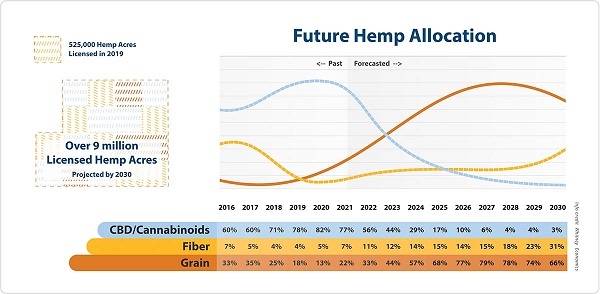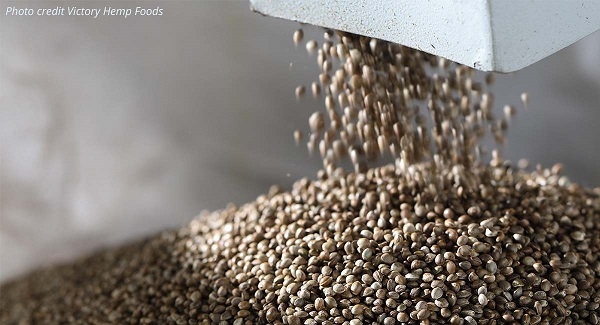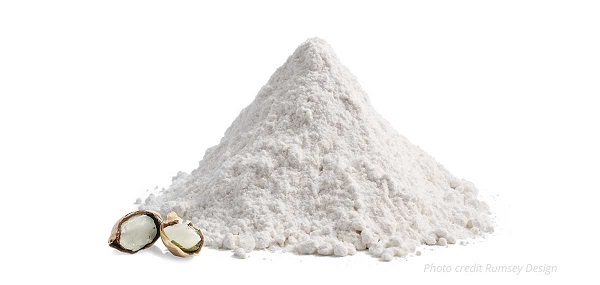Promotional Features
Anything but CBD - The Real Opportunity in Hemp
Picture this – by 2030, the licensed land to grow hemp expects to increase to over 9M acres.[i] But experts predict nearly 80% of the future allocation will go towards grains, not CBD! It is quite a contrast to our current state of affairs, where we dedicate more than 525,000 acres licensed for hemp use almost entirely to phytocannabinoid production. Hemp stock (fiber) and seeds (grain) remain grossly undervalued. Shocking considering that hemp fiber alone has thousands of industrial applications. However, perhaps a more significant opportunity for hemp exists in the grain, and hemp seed should be much more of a focus than CBD for the food and nutritional supplement industry moving forward.
Clear value, yet clear challenges in hemp grain
Processing grain (or hemp seed) nets two intriguing ingredients: A plant-based protein and a nutritional oil. Hemp seeds contain more protein wt/wt than almonds, chia seeds, and flax seeds. Mostly made of Edestin and Albumin proteins, hemp protein is easily digestible.
The fats in hemp seeds are almost entirely polyunsaturated fatty acids (PUFAs) that our bodies can't make and are therefore essential for us to consume in food. While omega-6s are common in many vegetable oils, nuts, and seeds, hemp stands out for delivering a balance of omega-6 to omega-3 fatty acids of approximately 3:1 that is optimal for our health.[ii]
Minerals can be difficult to obtain in a plant-based diet. Hemp seeds contain minerals necessary for our health like vitamin E, vitamins B1 and B6, iron, magnesium, zinc, and potassium.
From a regulatory standpoint, although they come from the same plant as the leaves and buds procured for cannabinoid use, hemp seeds are exempt from much of the barriers that pertain to CBD. Most hemp seed ingredients are GRAS, and manufacturers within the USA can have confidence using American grown hemp grain in a wide range of food and supplement applications.
Sensory characteristics have been the main impediment to hemp seed's adoption in the market. Like many other botanicals, hemp seed's impact on the final product's flavor, texture, and appearance has historically resulted in a poor sensory experience. Traditionally, hemp seed is known for its dark green color and pungent 'hempy' flavor that is difficult to cover without expensive nanoencapsulation or flavor masking agents. But hemp is not alone.
Many other plant-based proteins share these sensory challenges. One of the most popular examples is pea protein which too brings off-notes and grittiness to a formulation. The most common pea protein today is an isolated form that mitigates much of the sensory issues. Unfortunately, while it helps with flavor and performance, isolating protein nullifies much of the attraction of being "plant-based." After all, botanicals have a broader appeal thanks to their excellent nutritional attributes like fiber, antioxidants, and even mineral content. Isolates are never ideal, and product makers are actively seeking alternative solutions. Fortunately, ingredient technologies have come a long way, and new hemp seed ingredients are available today that solve these historic challenges.
Victory for Hemp
A strategic partnership between ingredient manufacturers Applied Food Sciences (AFS) and Victory Hemp Foods has accelerated years in research and expertise in hemp grain and led to a proprietary yet simple solution: Remove the outer shell – which contains a majority of the tannins and chlorophyll, contributing to green color, pungent odor, and bitter notes. The result is a product appropriately called the 'hemp heart' or dehulled-center of the hemp seed, and it makes a world of difference on the sensory experience.
"The heart of the hemp seed is the stored nutrient that intended for the sprouting of new hemp plants," explains Jackson Zapp, VP of Innovation at Applied Food Sciences. "By removing the shell, food and supplement manufacturers can benefit from the nutrition of hemp hearts in a clean presentation that is white in color and neutral in flavor. We are excited to invest in Victory Hemp Foods to help scale production at a time where hemp grains are starting to take off."
New to the market are two proprietary ingredients from hemp hearts. V-70™ hemp heart protein is a clean 70% plant protein with near-white color and a neutral flavor. V-ONE™ hemp heart oil is a cleaner, lighter omega-3 hemp heart oil that is flavorfully delicate. You can order samples of both of these ingredients through AFS's website.
"This partnership will allow Victory Hemp to apply our focus and resources on developing processing infrastructure and building a healthy supply chain as we work together to bring hemp back to the front row in American agriculture," adds Victory Hemp founder and CEO, Chad Rosen.
The best protein comes from the heart.
Plant-based protein, as a category, is evolving fast. Brands are trying to get protein in everything! Crackers, cookies, shakes, gummies, cold brew coffee, sports powders, and bars top a long list of products with protein-related claims. Protein continues to be one of the fastest-growing ingredients among global food and beverage launches at +26% CAGR.[iii]
Market share for the most prominent sources of proteins, whey and casein, is quickly dwindling as experts anticipate the global plant-based protein market to grow from $10.3 billion in 2020 to $15.6 billion by 2026.[iv] Whey and casein are derived from milk, and many consumers experience digestibility issues such as bloating, gas, or stomach cramps.[v] Animal protein is often criticized for its impact on greenhouse gas emissions and flows contrary to many 'hot buttons' like dairy-free, vegan, Non-GMO, etc.
Plant-proteins are an attractive alternative. Void of many common allergens and meeting the requirements of many popular diets such as vegan, paleo, and keto, plant proteins are quickly gaining momentum in many categories. Plant protein can also have additional phytonutrients like amino acids, fiber, antioxidants, vitamins, and minerals to help brain and body function.
The VP of Innovation at Applied Food Sciences, Jackson Zapp, explains the potential in hemp protein. "Hemp seeds, in particular, have a lot more nutritional promise. Thanks to overcoming the sensory hurdles, our hemp heart protein is becoming an attractive option taking share in many products on the market today."
Sustainability Also Matters
Don't sleep on sustainability as an influential factor for purchasing decisions. Consumers are willing to spend up to 31% more for products that align with their values relating to clean, sustainably-sourced ingredients.[vi] From an agricultural perspective, hemp has a tremendous upside. It can grow 'like a weed' in diverse climates and is ready to harvest in as little as 90 days.
For Victory Hemp Foods, their end goal is to work exclusively with sustainable and regenerative farms seeking to diversify their crop mixes by adding hemp to their traditional row crop rotations. Incorporation of hemp into crop rotation cycles has many benefits, including carbon sequestration separating approximately 1.63 tons of CO2 per ton of hemp and can also aid soil by adding nutrients back into the ground.[vii] In restoring organic matter, hemp roots provide underground biomass that increases soil water-holding capacity and the farm's ability to withstand drought. Introducing hemp in a diverse crop rotation allows for a more balanced level of soil nutrients.
Now more than ever, the industry is encouraged to look at hemp as more than CBD. It will take less than 50 years to deplete the suitable soil needed to grow food to feed our planet at the current rate of soil degradation.[viii] Promoting soil conditioning crops like hemp is imperative. Despite the CBD market currently driving the popularity of hemp, hemp grain for protein and oil have the opportunity to deliver cost-effective nutrition to everyday food products while utilizing more of the whole hemp plant bringing higher value to this vital crop.
---------
Sources:
[i] Whitney Economics - Déjà vu: An Economic Survey of the United States Hemp Cultivation Industry https://whitneyeconomics.com/[ii] Callaway, J.C., T. Tennilä & D.W. Pate, 1997a. Occurrence of “omega-3” stearidonic acid (cis-6,9,12,15-octadecatetraenoic acid) in hemp (Cannabis sativa L.) seed. J Int Hemp Assoc 3: 61–63.[iii] Innova Market Insights Trends and Opportunities in Personalized Nutrition Global, CAGR 2014-2018[iv] MarketsandMarkets 2021 Report. Plant-based Protein Market by Source (Soy, Wheat, and Pea), Type (Isolates, Concentrates, and Textured), Form, Application (Food(Dairy Alternatives, Meat Alternatives, and Performance Nutrition) and Feed), and Region - Global Forecast to 2026[v] Cherney, Kristeen. Healthline Why Protein Makes Your Farts Stink and How to Treat Flatulence. Feb, 2020[vi] Mintel. Report for AFS Innovation Retreat: Clean Label Conference[vii] Vosper, James BSCHons, FRGS. The Role of Industrial Hemp in Carbon Farming Company: GoodEarth Resources PTY Ltd (ABN 79 124 022 859)[viii] Regeneration International (RI) https://regenerationinternational.org/why-regenerative-agriculture/





